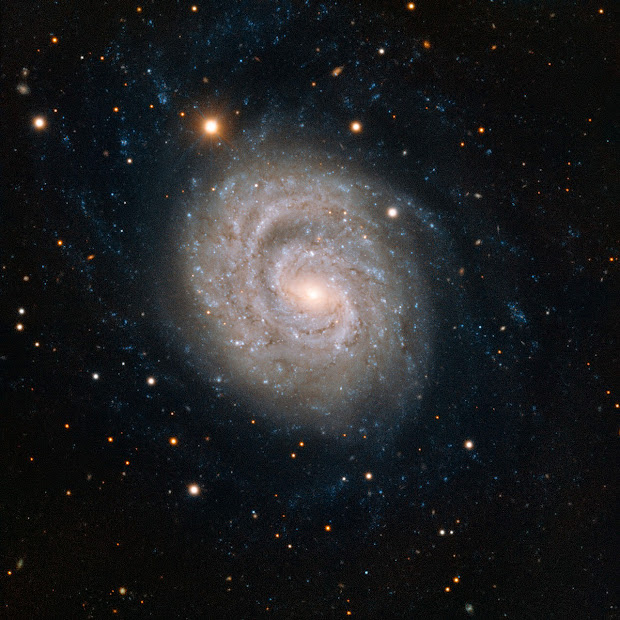Click on the image for full resolution (1.6 MB)
This image from ESO's Very Large Telescope at the Paranal Observatory in Chile shows NGC 1637, a spiral galaxy located about 35 million light-years away in the constellation of Eridanus (The River). In 1999 scientists discovered a Type II supernova in this galaxy and followed its slow fading over the following years. This year the Lick Observatory in California reported the discovery of a new supernova in the spiral galaxy NGC 1637. It was spotted using a telescope that had been specially built to search for these rare, but important cosmic objects. Follow-up observations were requested so that the discovery could be confirmed and studied further. This supernova was widely observed and was given the name SN 1999em. After its spectacular explosion in 1999, the supernova’s brightness has been tracked carefully by scientists, showing its relatively gentle fading through the years. The star that became SN 1999em was very massive - more than eight times the mass of the Sun - before its death. At the end of its life its core collapsed, which then created a cataclysmic explosion. When they were making follow up observations of SN 1999em astronomers took many pictures of this object with the VLT, which were combined to provide us with this very clear image of its host galaxy, NGC 1637. The spiral structure shows up in this image as a very distinct pattern of bluish trails of young stars, glowing gas clouds and obscuring dust lanes.
The full resolution image weighs 1.6 MB, so please be (a little) patient when downloading!
Image Credit: ESO
Image enhancement: Jean-Baptiste Faure










0 comment(s):
Post a Comment